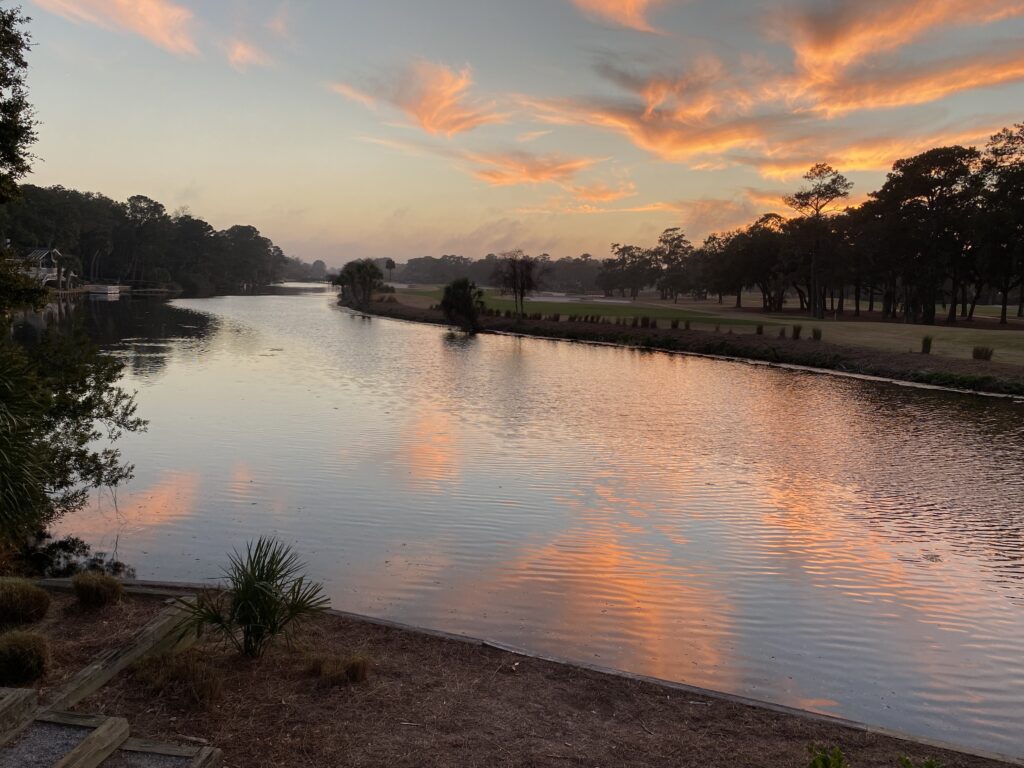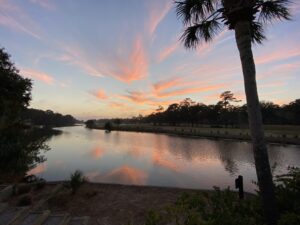The Palmetto Dunes lagoon system is an engineering marvel!
 Covering 11 miles and approximately 150 acres, we understand this is the second-largest lagoon system in the US.
Covering 11 miles and approximately 150 acres, we understand this is the second-largest lagoon system in the US.
The water is brackish, meaning a mix of salty sea water and freshwater with significant and diverse habitat for flora and fauna which is a major source of sand for our beach, and high ground for our homes.
Below are a few points of interest worth knowing about this magnificent resource:
Lagoon Access: One-third of the homes and multi-family dwellings have direct access to the lagoon, and many have docks and various watercraft. There are three public access docks for fishing and launching kayaks and canoes: 1. below the bridge at the north gate, 2. along the leisure path just east of the Queen’s Folly bridge, and 3. off St. George near the pedestrian bridge.
HH Outfitters, in PD, offers boat rentals, hourly, and a Kayak Club annual membership. Both provide unlimited use of a kayak or canoe for a year. Swimming and paddleboarding are not allowed for safety reasons.
 Protecting: The lagoons are a diverse habitat for crustaceans, reptiles, fish, waterfowl and of course alligators. Property owners with water frontage can help maintain water quality. Pesticides, herbicides, fungicides, and fertilizers can negatively impact lagoon water quality and wildlife habitat. When using such treatments, be mindful of the potential for overspray and runoff. Growing and maintaining native plants in the 20-foot vegetation buffer along the shoreline adds habitat and reduces leaching of chemical treatments into the water. Operating powered watercraft at a no wake speed prevents shoreline erosion.
Protecting: The lagoons are a diverse habitat for crustaceans, reptiles, fish, waterfowl and of course alligators. Property owners with water frontage can help maintain water quality. Pesticides, herbicides, fungicides, and fertilizers can negatively impact lagoon water quality and wildlife habitat. When using such treatments, be mindful of the potential for overspray and runoff. Growing and maintaining native plants in the 20-foot vegetation buffer along the shoreline adds habitat and reduces leaching of chemical treatments into the water. Operating powered watercraft at a no wake speed prevents shoreline erosion.
Maintaining: The periodic/monthly lowering of the lagoon is the single largest process used to manage the health of the system. The lagoon is opened via a sluice gate to Broad Creek at low tide, allowing water to flow out, creating a flushing effect, and lowering water levels by 6” to 8”. At high tide, fresh saltwater flows back into the lagoons, bringing sea life, nutrients, and an overall refresh of the lagoon. Water quality is monitored and tested for markers such as salinity, algae, organic-matter, and dissolved oxygen. In addition, the lagoon is dredged every few years to remove sediment and organic matter to maintain an optimal depth.
Get out there and enjoy it!
For additional information on our lagoon, check out the PDPOA web site https://pdpoa.org/about/lagoon-system/

